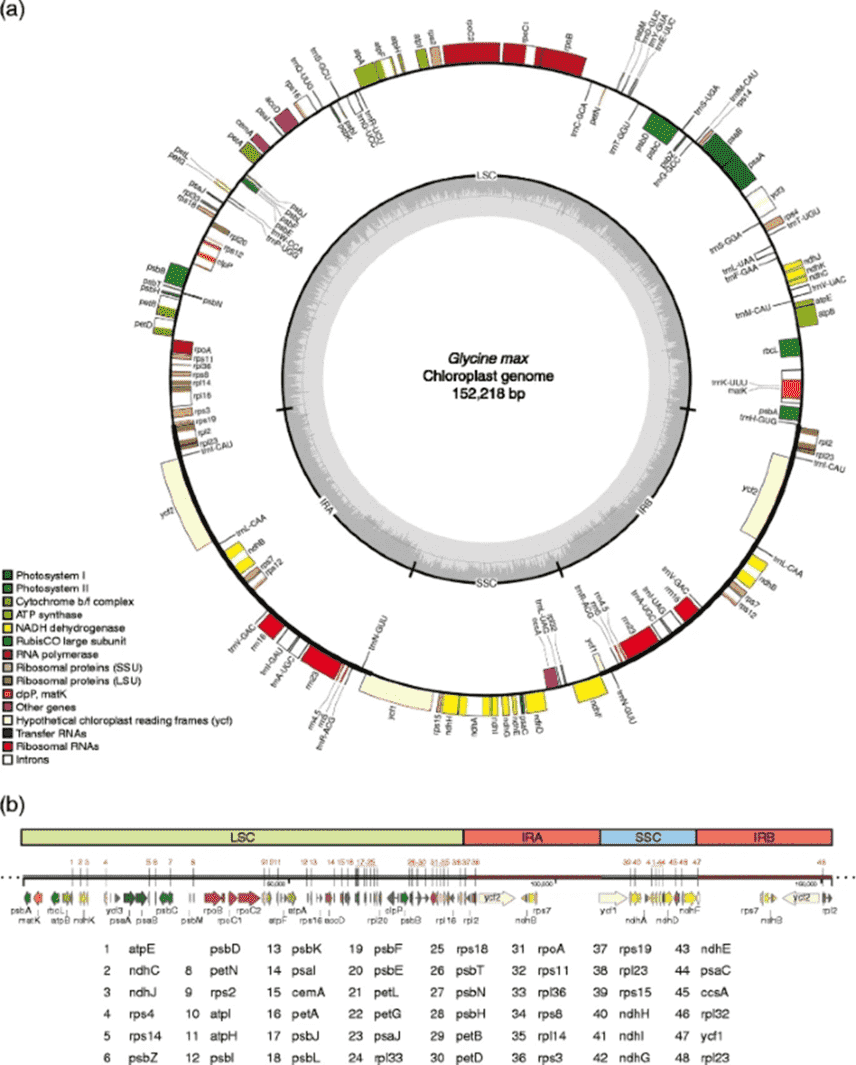Introduction
As one of the organelles that contain their own genome, chloroplasts (cp) are plastids with double membranes and vesicle-like structures. These tiny organelles convert solar energy, synthesize organic matters, and feed almost the entire life on Earth while providing for their own needs. However, it seems that chloroplasts are not satisfied with this, as they, along with other related plant organelles, perform many other functions such as transmitting environmental stress signals and promoting plant immunity.
Typically, the cp genome is a circular double helix structure ranging from 110 to 200 kb in length. It can be mostly divided into 4 regions: a large and a small single-copy (LSC, SSC) region, separated by 2 identical inverted repeats (IRs) which are linked by junction sites (JS). The function of some genes is still unknown, so Chloroplast DNA Sequencing provides a rapid and accurate method of characterizing known and unknown genes and functions.
Next-generation sequencing (NGS) has allowed researchers to obtain complete chloroplast genome sequences more quickly and cheaply, with Illumina currently being the main sequencing platform. Besides, long read sequencing technology taking the advantage of its long read length to span directly over complex regions, reduces the difficulty of de novo assembly, particularly in the junctions between IR and single-copy regions (SC) in the chloroplast genome.

Figure 1. Map of the soybean (Glycine max) chloroplast genome (Daniell et al. 2016)
A General Way to Sequence Chloroplast Genome
Generally, there are two steps to acquiring the cp genome: (i) extracting cp genome reads from whole genome raw data and (ii) assembly and resolution of specific loop structures including IR. Assembly and mapping of cp genomes can be achieved in de novo assembly or by depending on reference chloroplast genomes. Annotate and visualize different regions or components by bioinformatics analysis, including the complete cp genome, LSC, IR, SSC, chloroplast coding the DNA sequence (CDS), tRNA, rRNA and pseudogenes. SNPs and hypervariable regions can also be identified by genome alignment.
Applications of Chloroplast Genome Research
The cp genome is a valuable resource in uncovering the origin and evolution of species, the kinship between different species, and DNA barcodes for molecular identification, because of highly conserved. For example, the Orchidaceae is a huge and important family in floriculture, and DNA barcodes can be used to identify various cultivars and detect purity.
Chloroplast genetics is useful in understanding gene flow, cytoplasmic diversity, species identification, phylogenetic significance and population genetic analysis. As the study of chloroplast function has advanced, it has been discovered that chloroplasts play many key roles in a variety of plant processes such as plant defense, physiology and development, and variable splicing of transcripts. Combined with transcriptomics, patterns of changes in chloroplast gene transcription and translation during cold domestication have been identified. This information is particularly valuable for our understanding of climate adaptation in economic crops.
Besides, chloroplast genome engineering technologies have been developed with the intensive study of genomics and gene editing technologies. Through heterologous sequence integration, desirable traits from unrelated species will be integrated into the intergenic spacer regions of the cp genome to enhance agronomic traits or to produce different biological products, including biopolymers, industrial enzymes, biopharmaceuticals and vaccines.
References
- Daniell H, Lin C S, Yu M, et al. Chloroplast genomes: diversity, evolution, and applications in genetic engineering. Genome biology, 2016, 17(1): 1-29.
- Huo Y M, Gao L M, Liu B J, et al. Complete chloroplast genome sequences of four Allium species: comparative and phylogenetic analyses. Scientific reports, 2019, 9(1): 1-14.
- Cheng Y, Zhang L, Qi J, et al. Complete chloroplast genome sequence of Hibiscus cannabinus and comparative analysis of the Malvaceae family. Frontiers in genetics, 2020, 11: 227.
- Jiang H, Tian J, Yang J, et al. Comparative and phylogenetic analyses of six Kenya Polystachya (Orchidaceae) species based on the complete chloroplast genome sequences. BMC plant biology, 2022, 22(1): 1-21.

Leave a Reply